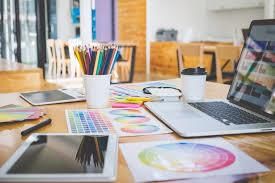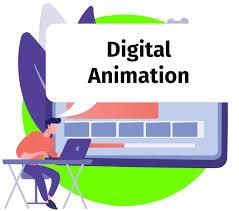Year 3 Exam > Year 3 Notes > Year 3 Computing > How are digital photos and videos made?
How are digital photos and videos made? | Year 3 Computing PDF Download
How do we create digital images?
- Introduction to Digital Imaging: Every day, countless digital photos and videos are shared online, highlighting the ubiquity of digital imagery.
- Using Digital Cameras: To create a digital image, a digital camera is essential. These devices capture images in the form of photos or videos.
- Capturing Images: Similar to the human eye, light enters the camera through the lens. The camera's sensor then captures the image, which is later processed by a computer.
- Sensor Technology: The sensor in a digital camera is akin to a device that gathers data from the surroundings and transmits it to a computer processor for further handling.
- Storing Digital Files: Images are saved as digital files either on the camera itself or on a memory card. The camera stores these files as either photos or videos.

What types of digital cameras do we use?

- We use various types of digital cameras for capturing photos and videos.
- Digital cameras are found in many of our everyday devices, some of which are very small in size.
- Devices like smartphones, tablets, laptops, and even digital watches are equipped with cameras.
- There are specialized digital cameras that can fly, go underwater, or be worn on the body.
- Let's explore some of these different types of digital cameras:
- Tablets with integrated cameras allow us to easily capture videos of friends. The large screen provides a clear view of the video being recorded, and all camera controls are accessible on the tablet screen.
- Smartphones come equipped with cameras for taking photos and videos, which can be easily shared online with friends. Using a selfie stick or holding the phone at a distance allows us to take selfies—photos or videos of ourselves.
- Drones are equipped with cameras designed to capture images from high altitudes. Mounted on small flying machines, these cameras can record videos and take photos of the landscape below. Drones and their cameras are controlled remotely from the ground using a computer.
- Action cameras are compact and lightweight, ideal for capturing dynamic videos while in motion. They can be attached to objects like bikes, chest harnesses, or even pets, remaining stable even during fast movements.
Why do we create digital images?
- Digital images are created to preserve memories of special moments, such as time spent with loved ones or memorable events like holidays.
- They serve as a convenient way to capture and recall information, such as taking a snapshot of a book title or an item in a store instead of jotting it down.
How do we make videos?
- Videos can range from simple recordings of moments (video clips) to more elaborate narratives like films or movies.
- When producing a film, planning is essential. This involves determining the sequence of events and organizing them into a storyboard, which outlines the progression of scenes.
- A storyboard helps visualize the flow of the film by detailing what will occur in each segment and the order in which events will unfold.

Question for How are digital photos and videos made?Try yourself: What type of digital camera is ideal for capturing dynamic videos while in motion?View Solution
Editing Digital Photos and Videos
Editing photos and videos allows us to modify and enhance our digital media, similar to editing and refining a written story after it's been written.
Editing Digital Photos
- A photo initially captures a realistic image of the real world at the moment it was taken. Historically, editing photos was challenging.
- Today, digital devices such as laptops, tablets, and smartphones make photo editing easy.
- Photo editing apps and tools provide buttons and brushes to erase objects, add new elements like people, remove unwanted subjects, and even change the sky's color. Fun additions like bunny ears and whiskers can also be included in selfies.
- Text, emojis, and other images can be added to personalize the photo. Editing can drastically alter the appearance of a picture.
Editing Digital Videos
- Programs, apps, and tools are available to edit videos and create cohesive films.
- These tools help arrange different scenes in sequence, cut out unwanted sections, and incorporate titles and special effects.
- Video editing also includes adjusting sound levels and adding background music to enhance the overall presentation.
Exploring Digital Photos and Videos
- We have various ways to view our digital photos and videos.
- We can observe them on the screen of the device where we created them initially.
- If the screen is small, we can opt to share them onto a larger display like a TV or computer screen.
- This sharing can be accomplished through a physical cable connection or wirelessly by casting.
Sharing Photos and Videos Safely
- After capturing a new selfie, photo, or video of our dance routine or sports activity, we often want to share it with friends and family.
- Sharing videos and photos can be done through the internet. This includes posting them on social media platforms or sending them via email. Alternatively, printed images can be sent by mail in a letter.
- It's important to always consult with a trusted adult before sharing any photos or videos online to ensure safety and responsible sharing practices.

The document How are digital photos and videos made? | Year 3 Computing is a part of the Year 3 Course Year 3 Computing.
All you need of Year 3 at this link: Year 3
|
13 videos|26 docs|8 tests
|
FAQs on How are digital photos and videos made? - Year 3 Computing
| 1. How are digital images created? |  |
Ans. Digital images are created by capturing light through a camera lens and converting it into digital data using electronic sensors. This data is then processed and stored as a digital image file.
| 2. What types of digital cameras are commonly used for capturing digital images? |  |
Ans. Common types of digital cameras used for capturing digital images include DSLR cameras, mirrorless cameras, point-and-shoot cameras, and smartphone cameras.
| 3. How are digital photos and videos made? |  |
Ans. Digital photos and videos are made by capturing light through a camera lens, converting it into digital data, and storing it as a digital image or video file. This process involves electronic sensors, processing algorithms, and storage devices.
| 4. How can digital photos and videos be edited? |  |
Ans. Digital photos and videos can be edited using various software programs such as Adobe Photoshop, Lightroom, Final Cut Pro, or iMovie. These programs allow users to adjust colors, lighting, contrast, and other aspects of the image or video.
| 5. What are some common features of digital cameras used for capturing images and videos? |  |
Ans. Common features of digital cameras used for capturing images and videos include zoom capabilities, image stabilization, autofocus, manual settings, and various shooting modes. These features help users capture high-quality photos and videos in different settings.
Related Searches















